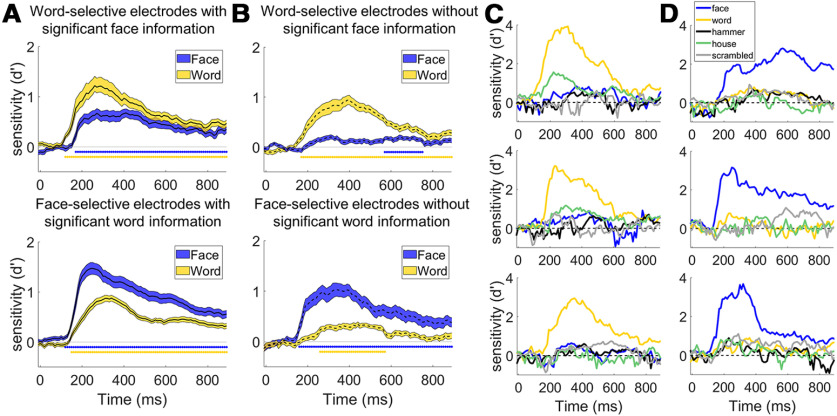Figure 3.
Independence of word- and face-processing networks. A, Average decoding time course for word-selective (top, n = 39) and face-selective (bottom, n = 75) electrodes that contained significant amounts of information about the other object category. Twenty-one of 28 (75%) face-selective electrodes in the right hemisphere and 54 of 80 (66%) in the left hemisphere could significantly discriminate words from the other object categories excluding faces (e.g., d′ sensitivity for words was above chance for five-way classification of the nonface object categories) at the p < 0.05 level (Bonferroni-corrected for multiple comparisons in time and electrodes within participant; see Materials and Methods). Nine of 23 (39%) word-selective electrodes in the right hemisphere and 30 of 64 (47%) in the left hemisphere could discriminate faces from the other object categories excluding words. Error bars indicate SE across electrodes. Colored bars under the curves represent times where the average selectivity is above chance (p < 0.001 corrected for temporal comparisons). B, Average decoding time course for word-selective (top, n = 48) and face-selective (bottom, n = 33) electrodes that did not contain above chance information for the other object category. Although decoding accuracy was above chance at later time points for the nonpreferred category across the population of electrodes, decoding accuracy was much smaller for the nonpreferred compared with preferred category. C, Example decoding time courses from three highly word-selective electrodes that did not display face-selectivity. D, Decoding time courses of three highly face-selective electrodes that did not display word-selectivity. The patient from which the middle recording was obtained was not presented with pictures of hammers.

